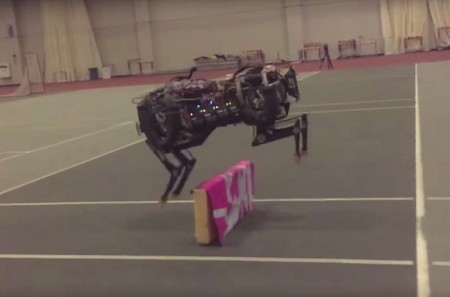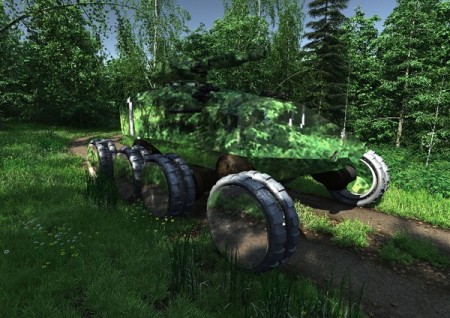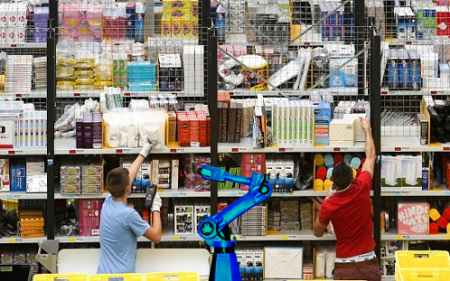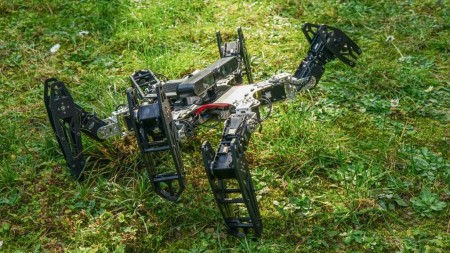June 2, 2015 – Thomas Frey, the futurist speaker, in his latest posting states “we are less than a decade away from workerless factories, robots with their own bank accounts, Watson-like judges dolling out sentences in court, and having wars filled with robots fighting other robots.”
He makes these observations based on a bit of prescience and because of examples like Foxconn, the Chinese manufacturer of Apple iPhones and iPads, whose latest forecasts put them three years away from automating the majority of their assembly line using up to 1 million robots, displacing much of its human workforce.
Here are more robotic stories that make what Frey is saying seem like less than science fiction or more like fact.
Meet EATR
Elbit Systems, a Fort Worth, Texas drone and robotics company, is developing a self-foraging, autonomous ground vehicle that finds biomass and consumes it to keep on running. That’s right. It identifies and consumes fuel from biomass sources. The acronym EATR stands for Energetically Autonomous Tactical Robot. Partially funded through DARPA, the American Defense research arm, Elbit’s initial proof-of-concept will use autonomous controls and sensors, a robotic arm capable of acting like hands, a hybrid engine with rechargeable storage, and a variety of mobile wheeled options to demonstrate how it finds, manipulates and ingests biomass to generate electrical power and operate.
Announcing the Amazon Robot Warehouse Contest
Jeff Bezos’ Amazon which employs tens of thousands of human workers to manage its warehouse operations recently launched a warehouse picking and packing contest inviting engineers from around the world to design a robot for doing warehouse work. The goal is not to replace existing human workers but to add robots to the workforce to work beside them. The company acknowledged it already has 15,000 robots in warehouse jobs.
The contest had robots picking and placing real inventory including Oreo cookies, books, toys and other objects that Amazon markets. A team from the Technical University of Berlin won the top prize picking and packing 10 of 12 items within a 20-minute time limit.
Amazon bought a robotic company, Kiva Systems in 2012 and based on this initial introduction sees the need to add even more to work alongside humans.
MIT Demonstrates Cheetah-Bot Doing High Hurdles
A four-legged robot that can run like a Cheetah and jump over obstacles in mid-stride was recently demonstrated by Massachusetts Institute of Technology engineers. The video showing the robot running and jumping shows the mobility advances being made in the field.
How does it do it? Cheetah-Bot has onboard LIDAR, a form of laser vision used by Google’s autonomous vehicles. LIDAR lets it map the terrain in front of it accurately assessing impediments in its path. In addition on board software provides instantaneous path planning and response so that it can adjust even to objects suddenly thrown in front of it. In tests to date the robot has demonstrated 90% success in negotiating hurdles and paths whether untethered or tethered. Field testing has been done on hard surfaces. Now the MIT researchers want to test their robot on grass.
Robots Demonstrate Ability to Recover from Injury
Researchers in France at the Sorbonne, Institut des Systemes Intelligents et de Robitque, Universite de Lorraine, Inria and CNRS along with those from University of Wyoming published last week their latest innovation on robot adaptation in the journal Nature.
The authors of the paper state, “whereas animals can quickly adapt to injuries, current robots cannot ‘think outside the box’ to find a compensatory behaviour when they are damaged.”
Well not anymore because these researchers developed an algorithm they call “Intelligent Trial and Error.” You can watch how two test robots, one a six-legged walker (seen with damaged raised appendage below) and the other a multi-segmented robotic arm, use the algorithm to continue to function by adapting to their injury.
The experiments involved injuring the robots in five different ways, removing a leg or breaking one or more arm joints. In the case of both the walker and arm the algorithm allowed the robots to experiment and adapt their function to continue operating in less than two minutes.














